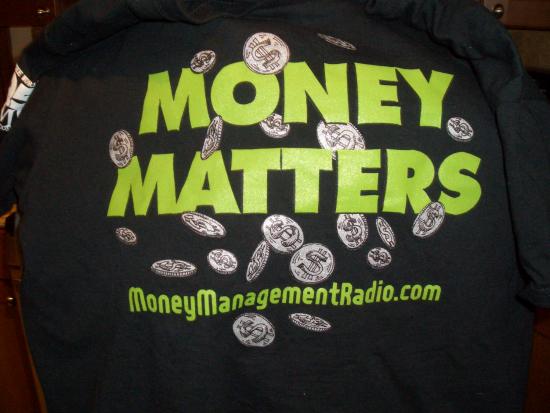

Well Hello Money Matters Fans…
Wow, what a month. I apologize for not posting here and keeping you up to date on the markets for a while. I took a hiatus from all social media and have written about it below.
Which also means I got a lot done.
I also made two trips to investigate some investment ideas and was working on some new plans that I will announce in due time. What I can tell you it is that it will mean even more investments for you, some fresh new ideas and more media announcements.
Stay tuned!
It’s good to be back in touch and you can look forward to continual updates on our markets and the economy surrounding it. I now have some free time to meet with anyone who would like a no-cost, no-obligation financial analysis and discussion.
Hear my strategies and how we address the dynamic markets of today. Money management, estate protection, estate planning, long-term care, health insurance and annuities are open for discussion. I am licensed for all of them and encompass them in a long term and diverse strategy for all types of investors and families.
Email me at mcuniberti@cambridgesecure.com or better yet give me a call at (530)559-1214 and let’s talk.
Money Matters takes to the air on March 2, 2017 at noon, Pacific Standard Time. You can tune in live at 89.5, 104.7, 105.1 or 88.3 all FM bandwidths, depending on where you live. See our website KVMR.org for exact locations and frequencies. You can also tune in live at moneymanagementradio.com or KVMR.org.
If you haven’t already done so, sign up for my no-cost market newsletter at moneymanagementradio.com in the upper right hand corner. You can also click on our Tweet button to tweet any page of our website to Twitter and we just installed a Facebook follow button to make it easy to track the markets through Money Matters.
Feel free to reach out to me any time now that I am done traveling while I was working on more new plans and offerings to better serve our clientele and the listening public.
We are forever changing and evolving here at Moneymanagementradio.com (the home of Money Matters) to better evaluate the markets and disseminate our valuable information and observations to the public regardless of income or social strata. There is something here for everyone!
It is good to be back. I am very excited about the opportunities presented to us with our new administration and the markets of 2017 and beyond. I have some definite opinions as what to expect and where to invest. After being market neutral for more than a year, it is indeed refreshing and exciting to share my new outlook on the markets in the months to come.
Watching the markets so you don’t have to!
*****************************************************************************
"Look Dankumus, our Facebook 'likes' went into hyperspace
And look at our eyes all bugged out... and for no good reason !
I guess pinning thousands of hours worth of useless crap to all these websites was not such a good idea especially since nobody gives a S**T anyway!"

Social media. Ten years ago most people wouldn’t have known the meaning of the word.
Today social media is wide spread, well known and the number one use of the internet worldwide.
You know the sites; Facebook, Twitter, LinkedIn and a host of other websites that people use to post, like, vent, hookup or do whatever on. With billions of folks using these portals, the total combined hours people spend on these things is astronomical and growing. Polls run the gamut on how much time folks spend on surfing social media but recent surveys are beginning to highlight some alarming statistics.
Apparently not only are people burning away their own time, the costs to business are becoming very real as employees twitter away the hours (pun intended) posting, liking tweeting or what have you.
BetterWorks Systems published a poll which found that 87% of full time workers surveyed admitted to reading social media during work hours. About 20% of workers using office computer systems read more than 20 posts a day which adds up to roughly two hours of paid work time. Approximately 22% of employees idle three or more hours away in the la-la land of social media.
One could make the case that social media is decreasing worker productivity in a big way. Who knows how many dollars are flying out the window as employers end up paying their workers who stare into screens perusing the latest post or tweet.
Furthering the waste, no doubt the trillions of posts and profiles that now exist on these media sites required trillions of man hours to actually construct. Think about that one for a minute.
Where are all these lost hours going? Besides making millions for the sites owners and their advertisers, it could be argued little else is gained monetarily by such activity.
A common belief is there is money to be made by the free advertising to be had by posts and profiles on social sites. My personal experience however has shown little monetary gain to my business despite my having thousands of "friends" on multiple sites and my repeated and ongoing posts, profiles, articles and advertisements
Besides the costs to business, an article by M. Farouk Radwan concludes surfing some social media sites can actually lower self-esteem because people tend to post only positive images of themselves. Comparisons against these fairy tale images rarely end up leaving the viewer with a higher self-image so says Radwan and actually can lead to battered egos and depression.
I am of the opinion the majority of stuff on these sites is little else then curious tidbits but useless garbage yielding nothing more than wasted hours in hyperspace. After all, who cares where I ate for dinner last, whom I hung out with or what mountain I climbed? And what’s the gain in forwarding a picture that strikes my fancy or posting some enlightening one liner I identify with?
The bottom line is that time spent on social media affects the real bottom dollar line of the people that do it and likely not in a good way. That translates to the more time we spend on social media sites, the more money we didn’t make doing something constructive and/or productive for ourselves, our businesses or our employers.
I recently took a month long hiatus from all social media sites as an experiment. My stress level and perception of the level drama in my life dropped surprisingly and the extra time I used doing real things in the real world and I am better for it.
Many believe the less time spent on these websites the better and apparently the corporate world is beginning to come to the same conclusion.
As the real costs to companies become more apparent, I suspect corporate policies makers will begin to put rules and restrictions in place to limit accessibility to such websites.
As individuals begin to access their own loss of production due to the hours spent on such things, I suspect self-imposed curfews will become more and more prevalent as well. Now close the damn browser and get your ass into the real world! There is more money to be made there and there are also real people to interact with. After all I never got a check handed to me from a computer and never shook hands with a keyboard. Life is where you make it and it aint made sitting at a desk staring into a screen. Ask yourself, how many hours do you spend twiddling away the hours in the fantasy land of social media?
Power off would ya?

*********************************************************************

It's tough when someone loses a check, especially if it's a free one..................
Keep reading
Within hours of his inauguration, President Donald Trump reversed a last minute policy made by Barrack Obama which took back a cut in fees by the Federal Housing Administration which would have saved about $500.00 a year that would have been paid by low income and first time home buyers.
In flurry of last minute policy actions from Obama that drew criticism from the Trump administration, the new President immediately put his hand to pen in what is likely to become a series of continuing policy reversals.
Many analysts are still at odds as to how we, as a nation, could forget so easily the real estate financing policies that drew this nation and indeed the world banking `system` to the brink of the abyss. Home lending policies that dropped interest rates to record lows, low qualifications standards, subsidized mortgages and fees, quotas, redlining and other mandates and influences by the Federal Government led to a real estate bubble of unprecedented magnitude of which its implosion almost brought the world’s financial `system` to its knees.
Central bankers and policy makers worldwide arguably addressed the unfolding crisis with literally more of the same medicine that caused it. Instead of letting the real estate market purge itself and reach its own equilibrium as it collapsed, authorities stepped forward with more low interest rates, more subsidy assistant, wider availability of home loans and a variety of programs aimed at borrowers and lenders alike. And all of it using public funds to backstop or backfill the trillions in home loans going bad and to literally pay off chunks of peoples mortgages to stave off a mass exodus of homeowners. Many of these programs continue to this day and interest rates continue to be in the historically extreme low range.
With Trumps cancellation of the FHA fee relief, he may be embarking on an ongoing campaign of reeling in the freebies and handouts that many argue have been bankrupting Federal balance sheets. With budgets deficits growing exponentially by the day, a policy of frugality and discipline may be just what this nation needs to finally get its fiscal house in order.
Widespread protest is sure to follow as it always does when checks are taken away from people but much like addressing an overspending spouse, the buck has to stop somewhere and when it does there is bound to be some complaining. That’s the trouble with starting down the road of giving out free money and bailing out bad debts. Moral hazard is destroyed, hard lessons are not learned, and markets don’t finish their much needed corrections not to mention the addiction of free money in your mailbox is a habit not easily relinquished.
All for now and Jambo!
Marc


